Babak Taghvaee looks into the history of Rossiya Airlines’ Boeing 747s and the carrier’s efforts to bring its grounded fleet back into service
February 6, 2022 saw Rossiya Airlines announce plans to retire its fleet of nine Boeing 747 widebody passenger aircraft as part of a wider fleet modernisation scheduled for 2024. While it had planned to retire its one Boeing 747-412 and eight Boeing 747-446s in 2023, the US-imposed sanctions on the St Petersburg-headquartered airline made it impossible to maintain and operate them in 2022, with a lack of spare parts for the 747s compounding the problem. With Boeing having stopped supplying spare parts for Rossiya’s passenger aircraft, eight of the airline’s nine 747s are grounded. Four of its ten Boeing 777-312/31H(ER)s are similarly affected. With sanctions showing no sign of ending or easing, the number is expected to grow.
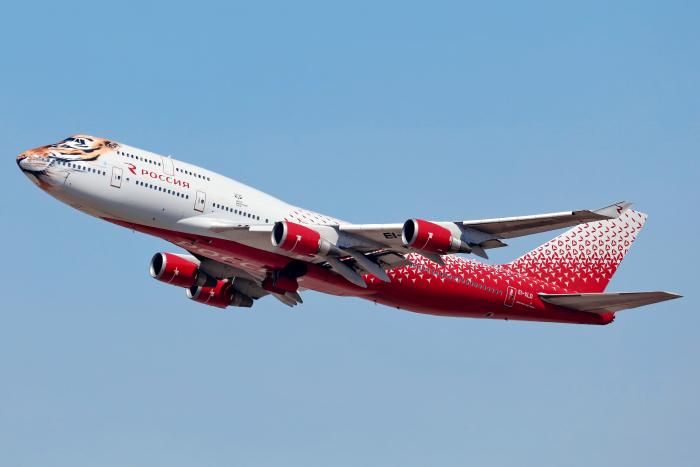
The Transaero origin
Following the collapse of the Soviet Union, Rossiya Airlines managed to charter, lease and even buy US-made passenger aircraft as large as the Boeing 747. In 2005, Transaero Airlines, a Russian carrier established on December 28, 1990, leased five retired Boeing 747-219Bs from Virgin Atlantic Airways, using them primarily for carrying passengers to tourist destinations in the spring and summer.
Transaero has operated widebody passenger aircraft at two points in its history. The very first examples were a pair of Ilyushin Il-86s, each equipped with four Kuznetsov NK-86 turbofans. The aircraft with RA-86123 (c/n 51483210091) and RA-86124 (c/n 51483210092) registration codes were operated by the airline until 1997 and 2000, respectively. In addition to the Il-86s, Rossiya operated DC-10-30 widebodies leased from American Airlines. The first two DC-10-30s were N140AA and N141AA, built in 1973 and 1974. They were used by Transaero until 1998, when they were returned to the lessor. After that, Transaero leased a third DC-10-30 – with registration code N142AA – operating it between March and December 1998.
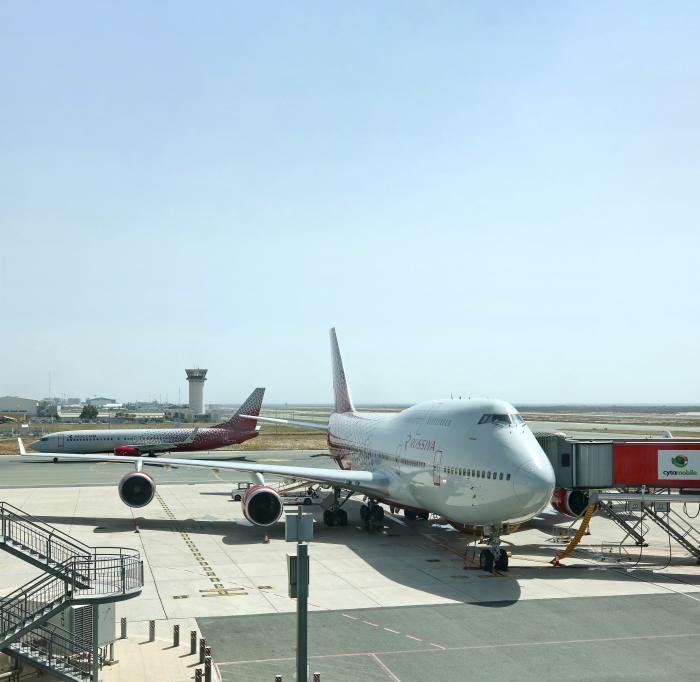
Each DC-10-30 was equipped with three General Electric CF6-50C2 turbofans and were superior to the Il-86 in several respects. The fuel consumption was less than that of the Il-86, the aircraft had twice the range (9,600km compared to the 5,000km maximum range of the Il-86) and it could carry more passengers (up to 380 compared to the Il-86’s 350). Yet, while operating the DC-10-30s made more economic sense than persisting with the Il-86s, Transaero stopped using the former in 1998.
In 2000, two years after the end of the lease of its last DC-10-30, Transaero Airlines leased an A310-324 widebody airliner for several months. Two years later, the airline also began leasing Boeing 767 widebodies to use for tourist flights in the summer season. Similar to the Il-86s and DC-10-30s in the past, Transaero Airlines used the A310 and Boeing 767s for shuttling tourists to popular holiday destinations in Cyprus, Egypt, Israel, Spain, Thailand and Turkey.
From 2005 to 2011, Transaero operated five Boeing 747-219B widebodies. Each was equipped with four Rolls Royce RB211-524D4 turbofan engines and could carry 496 passengers in economy class and 12 in business class on the upper deck within a maximum range of 12,150km. The five aircraft in question, with construction numbers 22722, 22723, 22724, 22725 and 22872, were built in 1981 and 1982. They were operated by Virgin Atlantic Airways, as G-VZZZ, G-VBEE, G-VSSS, G-VPUF and G-VIBE, between 1999 and 2004.
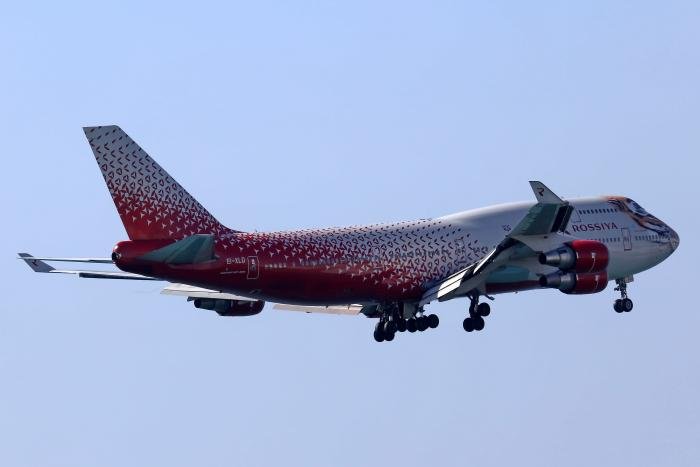
Transaero operated these Boeing 747-219Bs with VP-BQE, VP-BQA,VP-BQB, VP-BQC and VP-BQH registration codes until they were gradually withdrawn from service between 2008 and 2011. By 2012 they had been scrapped at Moscow Domodedovo Airport.
Transaero also operated a Boeing 747-267B with VP-BPX registration code equipped with similar engines between August 2006 and March 2011. This aircraft – with construction number 22872 – was operated by Virgin Atlantic Airways as G-VCAT from 1998 to 2002.
Between 2007 and 2009, Transaero purchased four ageing Boeing 747-346s previously used by Japan Airlines (JAL). The 1986-built aircraft, each equipped with Pratt & Whitney JT9D-7R4G2 turbofans, were operated with certificates of airworthiness (CofAs) obtained from the British Virgin Islands. Their registration codes were VP-BGU, VP-BGY, VP-BGW and VP-BGX. When it was time for their overhaul or D check in 2012 and 2013, the aircraft were withdrawn from service by Transaero. Two of them were scrapped at Bruntingthorpe Aerodrome in Leicestershire, UK, while the remaining three were stored at Domodedovo.
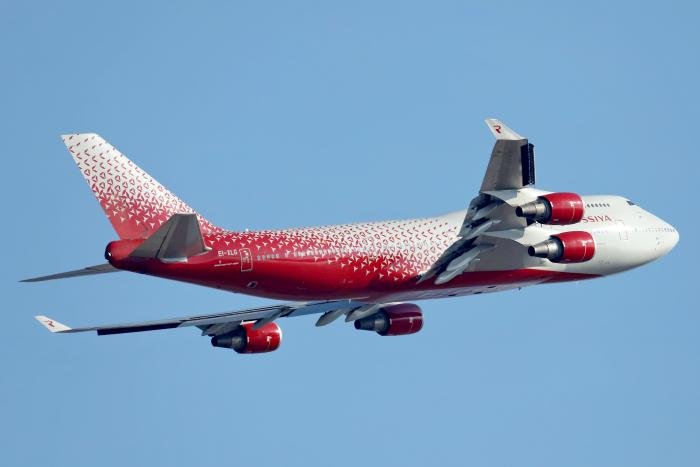
In 2011, Transaero began leasing and flying examples of the Boeing 747-400 series, which were substantially more economical to operate than classic jumbo jets. The airline opted for four ex-Singapore Airlines Boeing 747-412s, each equipped with four Pratt & Whitney PW4056 turbofans, three ex-South African Airways Boeing 747-444s featuring four Rolls Royce RB211-524G turbofans, and nine ex-JAL Boeing 747-446s, each equipped with four General Electric CF6-80C2B1F turbofans.
The Boeing 747-412s with 28025, 28028, 28029 and 28031 construction numbers were operated by Transaero with EI-XLO, EI-XLM, EI-XLN and EI-XLL registration codes from 2011 and 2012. Meanwhile, the Boeing 747-444s with 26637, 26638 and 28468 construction numbers were operated with VP-BVR, VP-BKJ and VP-BKL registration codes respectively from 2007 and 2008. Last, the nine Boeing 747-446s with 26359, 26360, 26362, 27100, 27645, 27646, 27648, 27650 and 29899 construction numbers were operated with EI-XLB, EI-XLD, EI-XLE, EI-XLC, EI-XLF, EI-XLJ, EI-XLI, EI-XLH and EI-XLG registration codes respectively. These nine Boeing 747-446s cost Transaero a relatively modest $252m.
The Rossiya era begins
In March 2015, it transpired that Transaero Airlines had accumulated almost €1.1bn in debt. At that time, the airline had 62 aircraft in its service, with a further 66 on order. It had planned to replace its Boeing 747-400s with two Boeing 747-8s and four Airbus A380-800s between 2016 and 2019, but bankruptcy meant that the orders were cancelled. The subsequent devaluation of the rouble and the shrinking market for tourism from Russia as a result of Russian military intervention in the Donbas War in Eastern Ukraine prevented Transaero from paying off its debts.
In September of the same year, Transaero was declared bankrupt and negotiations with the Russian government and Aeroflot to mount a takeover and assume financing of the airline failed. By October 2, Transaero’s debts had reached €3.9bn. Ticket sales ceased and the airline’s operating license was revoked on October 25, 2015.
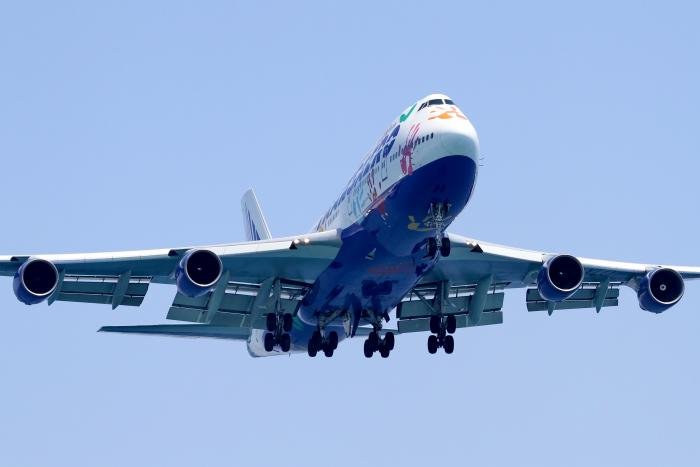
Aeroflot subsequently took over several of Transaero's leased aircraft, among them 14 widebody and long-haul examples, including one Boeing 747-412, eight Boeing 747-446s and five Boeing 777-312s. These aircraft were later transferred to Aeroflot subsidiary Rossiya Airlines. The sole 747-412 was EI-XLM, while the eight 747-446s were EI-XLC, EI-XLD, EI-XLE, EI-XLF, EI-XLG, EI-XLH, EI-XLI and EI-XLJ. They were owned by VTB Leasing, a subsidiary of VTB Bank, a Russian majority state-owned bank. VTB sent a number of Transaero’s Boeing 747-412s and 444s to Teruel Airport in eastern Spain for storage. Some of them found new users, but others were scrapped.
Rossiya Airlines continued using the Boeing 747s and 777s on the same routes that Transaero had been operating before its bankruptcy. For three years, operating the 747s remained profitable, but this ended abruptly in early 2020 with the arrival of COVID-19. With the number of passenger flights to tourist resorts falling, Rossiya began to put its Boeing 747s in storage, leaving just a few available for routine passenger flights between Moscow and a handful of destinations in the Far East.

As the pandemic took hold, most carriers mothballed their four-engined long-haul airliners, but Rossiya continued flying its 747s, using them mainly for transporting passengers from Russian cities to Black Sea resorts, for example from Khabarovsk and Vladivostok to Sochi and Simferopol. In the first weeks of the pandemic, every other seat was kept empty as a safety measure to control the spread of the virus, but from March to June 2020, when the Russian government imposed a self-isolation law, the number of passenger flights in Russia fell significantly. In August 2020, Rossiya increased its active Boeing 747s as the government began to ease its self-isolation restrictions.
The impact of sanctions
Following Russia's invasion of Ukraine on February 24, 2022, the US government imposed sanctions on various Russian companies and airlines, among them Rossiya. As a further consequence of the sanctions issued by the European Union, Canada and the US, Russian airlines operating aircraft registered on the Irish aircraft register were no longer able to access the current approved airworthiness and operational data from the type certificate holder, which is required for the continuing safe operation of the aircraft. Unable to ascertain their airworthiness, the Irish Aviation Authority cancelled the certificate of airworthiness for all those affected, among them Rossiya’s Boeing 747s.

Prior to the sanctions, one Rossiya Airlines Boeing 747-446 – EI-XLG – had already received the registration code RA-73287. With the implementation of the sanctions, EI-XLC, EI-XLD, EI-XLE, EI-XLF, EI-XLH, EI-XLI, EI-XLJ and EI-XLM were re-registered as RA-73283, RA-73284, RA-73285, RA-73286, RA-73288, RA-73289, RA-73290 and RA-73291, respectively. Even before the start of the Ukraine war, five of these Boeing 747s – EI-XLC, EI-XLE, EI-XLH, EI-XLG and EI-XLM – had been put in storage. Meanwhile, RA-73287 was in Sharjah in the United Arab Emirates for a D check at the Volga-Dnepr Gulf aircraft maintenance and overhaul centre.
The US Commerce Department, through the Bureau of Industry and Security (BIS), responded to Russia's invasion of Ukraine by implementing a sweeping series of stringent export controls that severely restrict Russia's access to technologies and other items that it needed to sustain its aggressive military capabilities. These controls primarily targeted Russia's defence, aerospace and maritime sectors and were intended to cut off the country’s access to vital technological inputs, disable key sectors of its industrial base and undercut Russia's strategic ambitions to exert influence on the world stage. Effective from February 24, 2022, BIS imposed expansive controls on sending aviation-related items to Russia and implemented a license requirement for the export, re-export or transfer (in-country) to Russia of any aircraft or aircraft parts.
On May 20, 2022, an order was signed denying Rossiya Airlines’ export privileges for 180 days on the grounds that issuance of the order was necessary in the public interest, to prevent an imminent violation of the existing regulations. To date, this order has been renewed every 180 days. As a direct impact of the sanctions, Rossiya Airlines failed to obtain spare parts for its Boeing 747s and was unable to operate them for international flights to tourist destinations. While in winter 2021, half of the fleet had been operational for tourist flights, in 2022, only one aircraft – RA-73284 – was in use, for charter flights to the Egyptian resort Sharm El Sheikh.
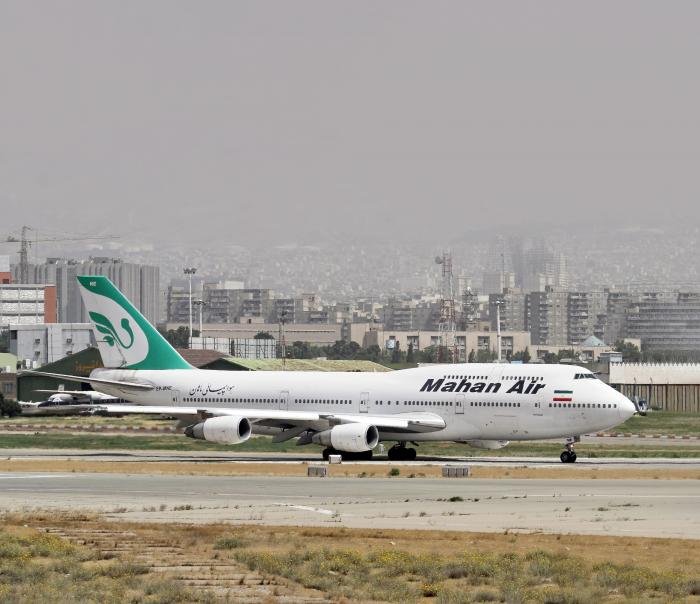
Rossiya operated four Boeing 747-446s on tourist flights between Moscow and Sochi from June 1 to September 27. RA-73286 flew from June 21 to September 27, RA-73288 from June 3 to September 19, RA-73289 from June 2 to September 30 and RA-73290 from June 1 to September 20. After the tourism season, the aircraft were stored in Domodedovo. Only one of them – RA-73290 – was retained in an airworthy condition. It was used to ensure Rossiya pilots’ skills remained up to date. Several of them undertook a training flight from in December 2022.
In a bid to make three additional Boeing 747-446s available for tourist flights in summer 2023, Rossiya has begun negotiations with two Tehran-based firms, Mahan Air and Fars Co (Fajr Ashian), which operate an aircraft maintenance, repair and overhaul MRO centre. Both have years of experience in performing all sorts of maintenance for the Boeing 747s and General Electric CF6 Turbofan engines. At the time of writing, in early 2023, Rossiya had already sent aircraft parts to be repaired in Iran, in order to evaluate the quality of work before signing a contract. According to representatives of Mahan Air, the Iranian airline has also shown interest in purchasing several already grounded Boeing 747s from Rossiya Airlines in exchange for the restoration and reactivation of three other examples of the type.

